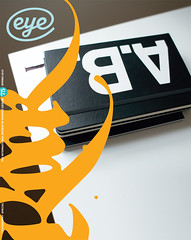Spring 2010
Product design: secular religion or useful hobby?
Objectified: A Documentary Film
Directed by Gary Hustwit, 2009<br>DVD 75 mins + 60 mins of extras. Language: English, German, French, Dutch and Japanese; English subtitles <br>Swiss Dots, £17.99, $24Encouraged, no doubt, by the well deserved success of his first documentary, Helvetica (2007; see Eye 64), Gary Hustwit has followed with a more wide-ranging exercise, turning most of his attention to product design. Over a running time of 75 minutes he interviews designers, journalists and museum curators about the designer’s role in society. Face-to-camera sessions are interspersed with tracking and panning shots of products, from children’s toothbrushes to swanky sports cars. The opinions expressed are equally varied: one moment, for example, we are offered common-sense views on the importance of ergonomics; the next, Dieter Rams, director of design at Braun AG, 1962-95, is seen declaiming, yet again, his litany of design principles (good design is aesthetic, good design makes a product understandable, good design is unobtrusive...). Further on, we are told that ‘design is the search for form’, then that, if designs are properly thought out, its user ‘should grow a little more fond of them with time’.
Many of us in the biz will have heard views of this sort at one time or another; what makes this film overwhelming is the sheer profusion of them, jostling one another in rapid succession. You find yourself thinking, ‘Hang on a bit, let’s hear that again’, or, ‘How did we get from there to here?’ Yet the director at no point sums up the story so far (not even at the very end). This is deliberate. In his liner notes he says: ‘Part of my goal ... has been to make viewers aware of their own thoughts and feelings about design, to ask themselves questions and draw their own conclusions. I believe those conclusions should be the end result of watching the film, not part of the film itself.’
On a second viewing – and this is strongly recommended – the dialectic becomes clearer because you, the viewer, are making your own contribution to the debate, agreeing with a point here, rejecting another there; even, perhaps, stopping the film to have a brief discussion with a fellow viewer.
Some of the initial confusions are resolved but not all, and for good reason: they are inherent in the complexity of the subject and in the conflicting natures of its practitioners. Design is variously regarded as a secular religion, a social task, an art form, a merchandising tool and a useful hobby. We should not, therefore, expect to have it all neatly sorted for us as though in a butterfly collection.
We should, I believe, be grateful to Hustwit for assembling such a wide and stimulating array of views arising from the design of manufactured objects. Meanwhile, the arguments will continue. And so they should.
First published in Eye no. 75 vol. 19 2010
Eye is the world’s most beautiful and collectable graphic design journal, published quarterly for professional designers, students and anyone interested in critical, informed writing about graphic design and visual culture. It is available from all good design bookshops and online at the Eye shop, where you can buy subscriptions and single issues.

